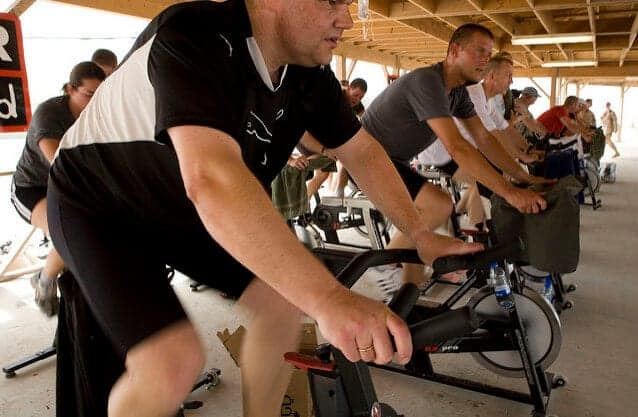High intensity workouts are the name of the game in health and fitness, and currently reign supreme among workouts as boutique classes pop up across the country, utilizing this science-backed method.

However, while it is effective in burning fat, like any good thing, too much high intensity exercise can become a bad thing. In fact, it can lead to a very serious condition called rhabdomyolysis.
Rhabdomyolysis is a condition in which skeletal muscle beings to break down, and can cause the contents of the muscle to leak into the circulatory system, infecting the bloodstream. Rhabdomyolysis can become life-threatening, and is often caused by overexertion. With the rise of certain sports and fitness activities that constantly push the body to its limits, rhabdomyolysis has become more common than before, even earning a name among the Crossfit community as “Uncle Rhabdo.”
In the American Journal of Medicine, a study was conducted on three people who were diagnosed with rhabdomyolysis as a result of pushing too hard during spinning classes. One of the subjects, a 33-year old kindergarten teacher, had to be put on dialysis in order to treat the progressive condition.
Related: Researchers Determine the Best Time of Day to Exercise
Dr. Alan Coffino, a nephrologist and chairman of medicine at Northern Westchester Hospital in New York, treated this woman himself. He co-authored the study, stating, “It’s tough to tell somebody who’s 33 years old, ‘I need to start you on dialysis.’ And so you treat them with a lot of fluids, and you hopefully get them to the point where their kidneys open up and they start getting rid of the toxins and they don’t have to go on dialysis. In her case, we had to pull the plug and put her on dialysis.”
Thankfully, dialysis can be well-received treatment, and in this case, allowed the patient to resume normal activity — barring any intense spinning classes — after about two weeks. It then becomes extremely important to take precautions against developing rhabdomyolysis, as some people can be especially prone to it. For example, McArdle’s disease and Duchenne muscular dystrophy are often predisposing factors.
Related: High Impact Exercise Proves Most Effective for Shedding Pounds
However, for the general population, it can be prevented by taking care to avoid overexertion. It can occur in just one session, as found in the aforementioned study. Coffino said that of the 46 subjects they examined who had rhabdomyolysis, 42 of them had developed it in their first class. The shock to the muscle group can be extremely damaging, especially when it is a new activity. People who work out regularly are susceptible as well, if they push themselves too hard.
Dr. Maureen Brogan, lead author of the study, associate professor of medicine at New York Medical College, and nephrologist at Westchester Medical Center, said that one of her patients got it within the first 15 minutes of spin class. Considering the intensity of the exercise and taking it slowly, especially when it is a first attempt at a new exercise, can end up saving the life of the person working out. As Brogan says, “It’s better just to err on the side of caution and take things slowly.”
Marissa is a health and fitness writer from the Tampa Bay area. In addition to researching the latest trending topics, she enjoys instructing kickboxing classes and posting incessantly to her Instagram account.


![How To: ‘Fix’ Crepey Skin [Watch]](https://cdn.vitalupdates.com/wp-content/uploads/2017/05/bhmdad.png)












